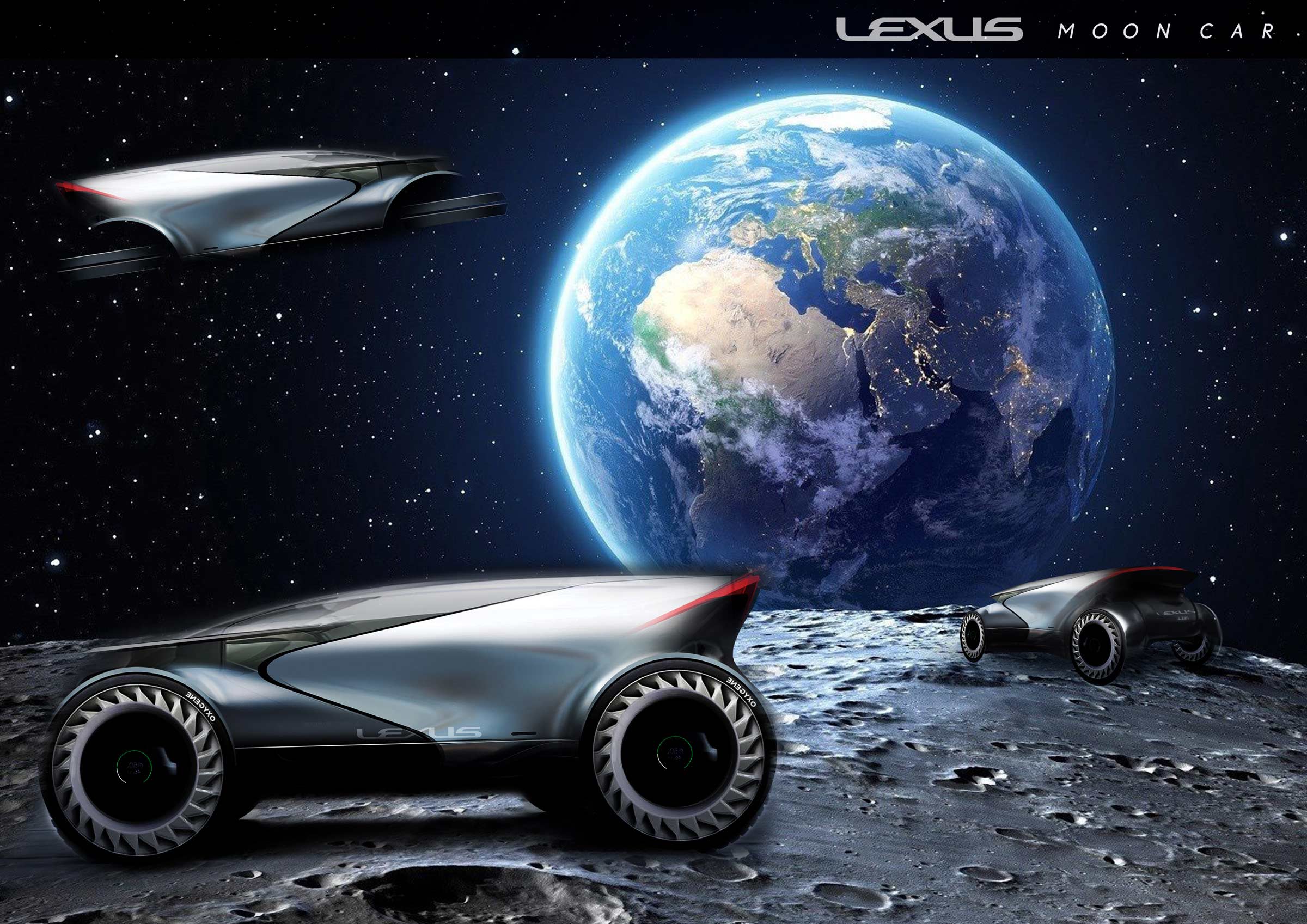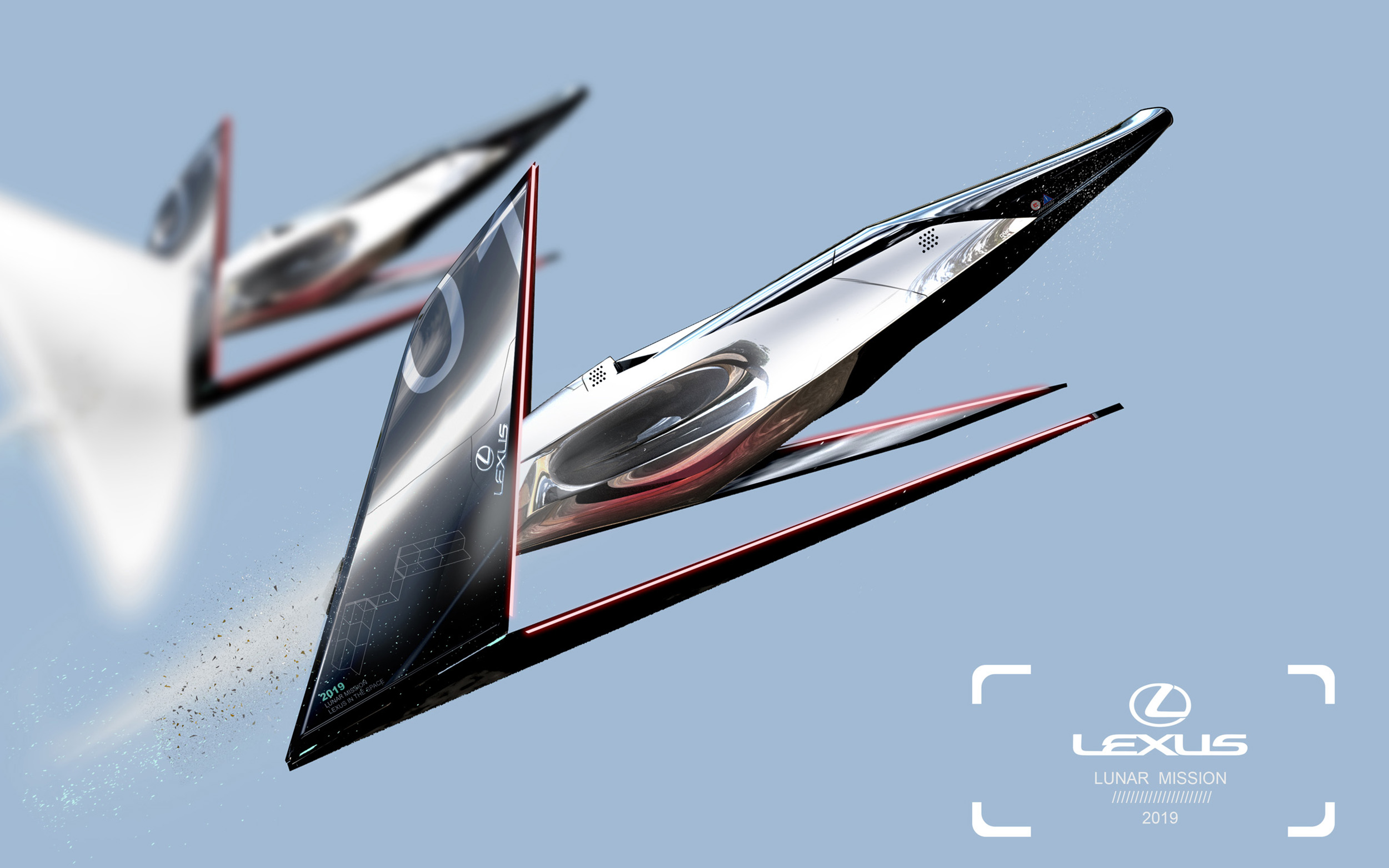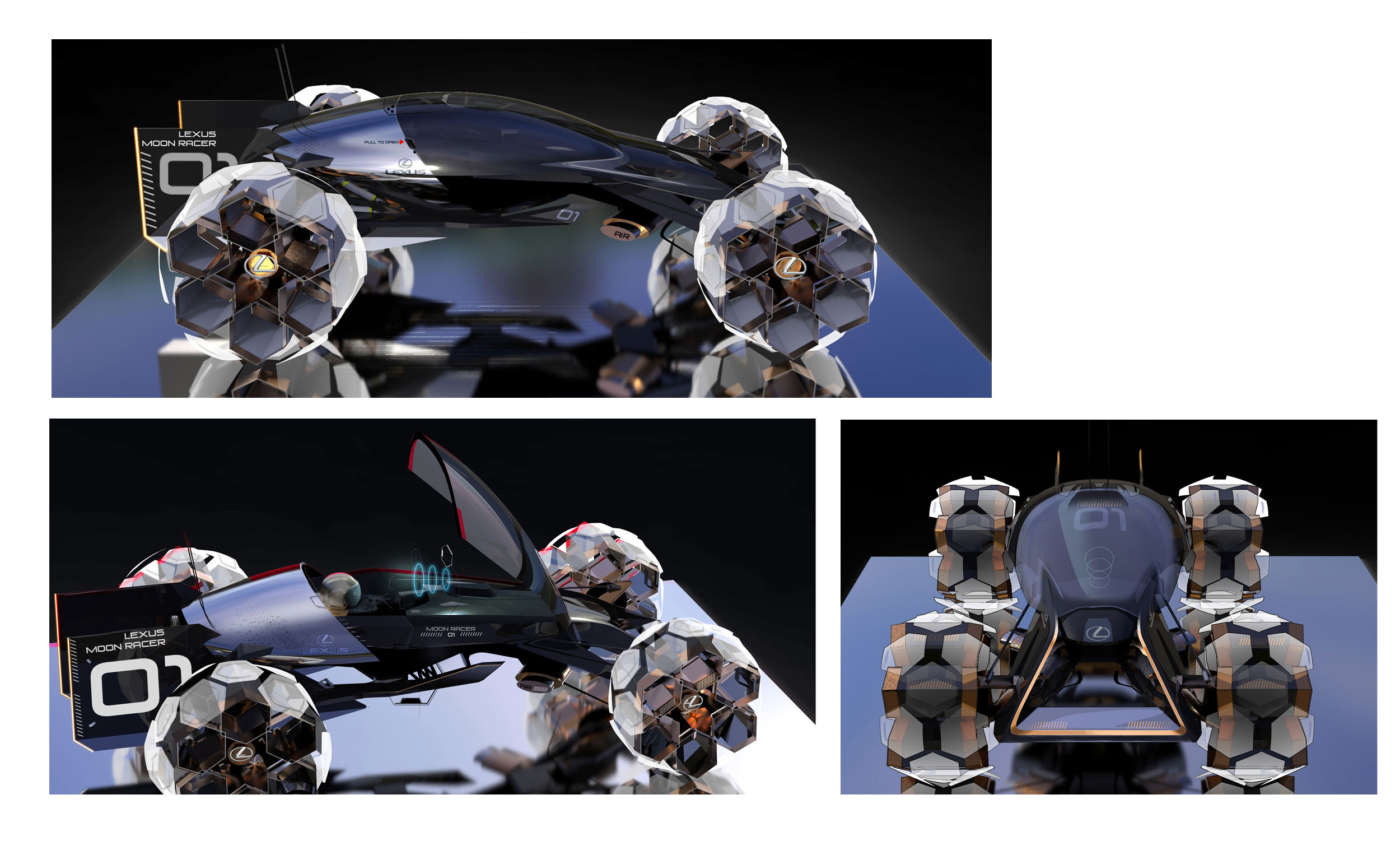For Document Fall/Winter 2019, we called upon culture's brightest minds to envision lunar life. Here are Lexus's seven proposals for luxury space travel.
Click here to read all of the portfolios.
For Document’s Fall/Winter 2019 Issue, we invited a selection of the culture’s most compelling architects, designers, artists, thinkers, and even a DJ, to find their inner Major Toms and imagine human life on the Moon. We asked Lexus to consider what our vehicles will look like—how will we navigate the Moon’s low-gravity, rocky terrain? Rooting their designs in their latest terrestrial models, the creative minds at Lexus presented seven proposals for cruising the lunar landscape. Here Document speaks with the design president, Ian Cartabiano, about Lexus’s approach and what it’s like to drive a motorcycle on the moon.
Maraya Fisher: How do considerations differ between designing for Earth and designing for the Moon? What has to be accounted for, and how did you have to adjust your approach?
Ian Cartabiano: When we started the lunar concepts, our team was working on the LF-30 Concept, which recently debuted in Tokyo and which represents the ‘Lexus Electrified’ futuristic vision for Lexus. The design team had a chance to go beyond near-term production and look ahead to how advanced technology will change the way we interact with vehicles. The ‘Lexus Electrified’ vision targets a fundamental leap in vehicle performance, handling, control, and driver enjoyment—even as mobility within our society continues to change with autonomous driving and vehicle electrification. So, we were already thinking from a future perspective.
The biggest change was the minimal gravity on the lunar surface. This allowed us to think differently about how one can move across the moon. Also, we wanted to make lunar ‘driving’ more fun. We were proposing the idea of the moon as a travel destination and were looking for an exciting way to experience this new location.
Maraya: Beyond the practical lunar considerations, where did you get aesthetic inspiration?
Ian: We were inspired by the design language we were developing for LF-30 Electrified, and the lunar proposals were a chance for the team to dream even further out. Using that design language we were trying to create a very futuristic and avante garde statement that still conveys a premium style.
Maraya: What is your favorite vehicle from a sci-fi space film?
Ian: Hmm, it’s a hard choice, I have three: the Starship Enterprise from Star Trek, The AT-AT walker from Star Wars, and the light cycles from the original Tron.
Maraya: What do you imagine driving on the moon is like?
Ian: I imagine it to feel more free and more intense, and very personal, just you and the moon.
Maraya: What is your favorite lunar design concept and why? Which would you like to drive?
Ian: I was very impressed by the outcome of our team’s proposals. Given the limited time we had, the passion and energy the designers put into this shows in the ideas. I could see the excitement within the team to make something more ‘sci-fi’, and ‘not car.’ I really loved the Zero Gravity proposal, using the minimal gravity to find another way to skim the moon’s surface and utilizing our Lexus concepts’ driver connection philosophy to create a new aesthetic and experience. I’d love to drive it—it’s like riding a motorcycle on the moon! And I love the free-thinking behind the Bouncing Moon Roller, it really pushes the idea of what can be designed when variables like gravity are shifted.
Maraya: If 2020 is the year we colonize the moon, would you go? Why or why not? If you go, what personal item would you be sure to bring?
Ian: Yes, I would love to go! I would bring a drawing my daughter made of us when she was three years old.






















